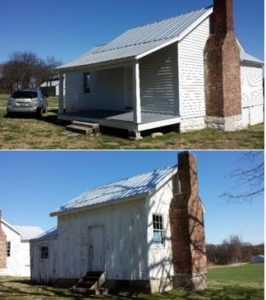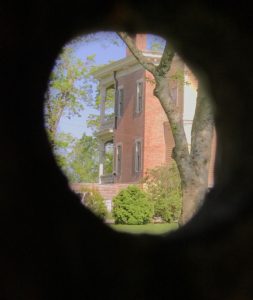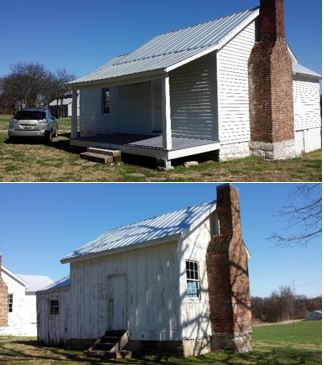Dr. William and Mary Ann Saunders Hoggatt built their home on the Clover Bottom plantation in Nashville in the 1850s. The slave cabins behind the main house were built in 1858 and are two of the few remaining slave cabins in Davidson County. During the latter part of 1862, Union troops occupied the plantation for several weeks while earlier that summer, General N. B. Forrest, with 3,000 of his men, visited Clover Bottom.
In his autobiography, John McCline, born enslaved at Clover Bottom ca. 1852, provided a rare first person account of slavery on a middle Tennessee plantation just prior to and during the Civil War. He recounts that during Gen. Forrest’s visit, some 25 hams were cooked for Forrest and his men. Some of his recollections are troubling, including his account of the overseer who murdered the enslaved “Austin” who had helped build the cabins.

In December, 1862 the 13th Michigan passed along Lebanon Pike and shouted to young McCline, “Come on Johnny – go with us up north and we will set you free.” McCline jumped aboard only later realizing “they called us all Johnny Reb.” McCline served for the remainder of the War as a teamster for the regiment. He learned to read and write during this time.

Since 1994, Clover Bottom has been the home of the Tennessee Historical Commission. Comprehensive archeological studies, outbuilding restoration, walking trails, and interpretive signage reflect the State Historic Preservation Office’s ongoing commitment to the preservation of one of Tennessee’s important historic resources.

